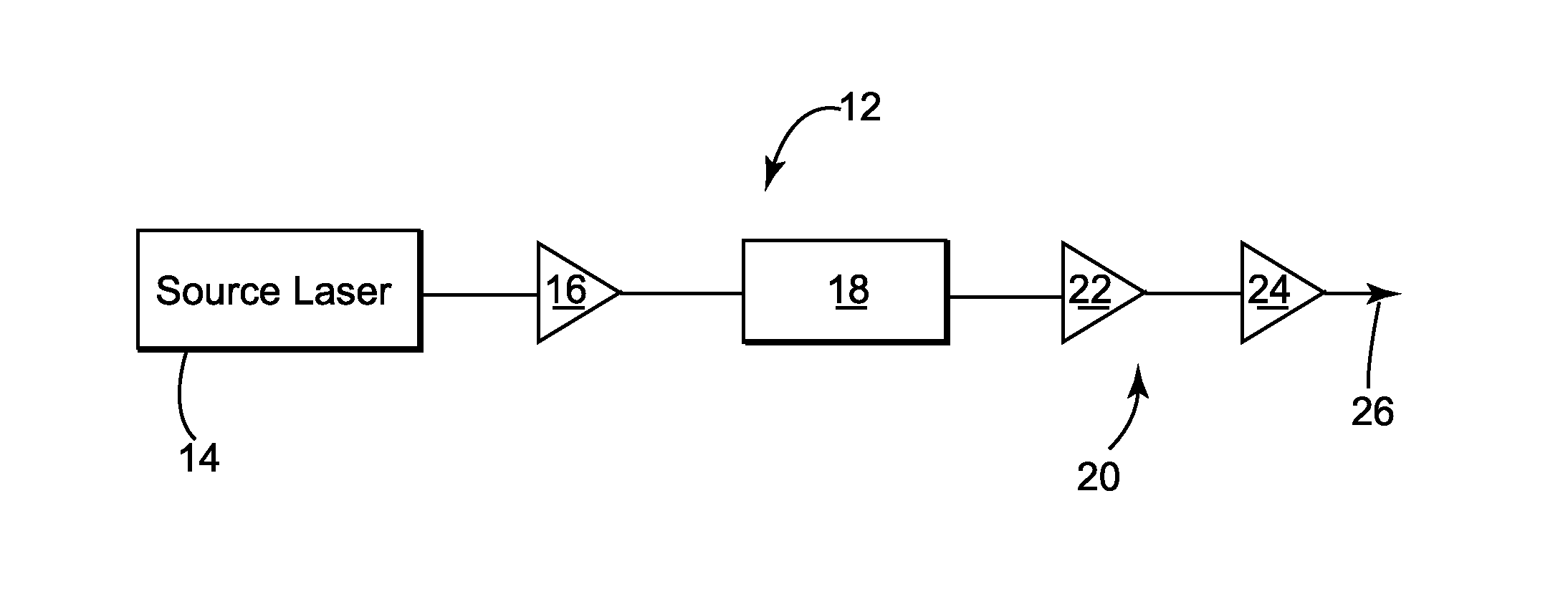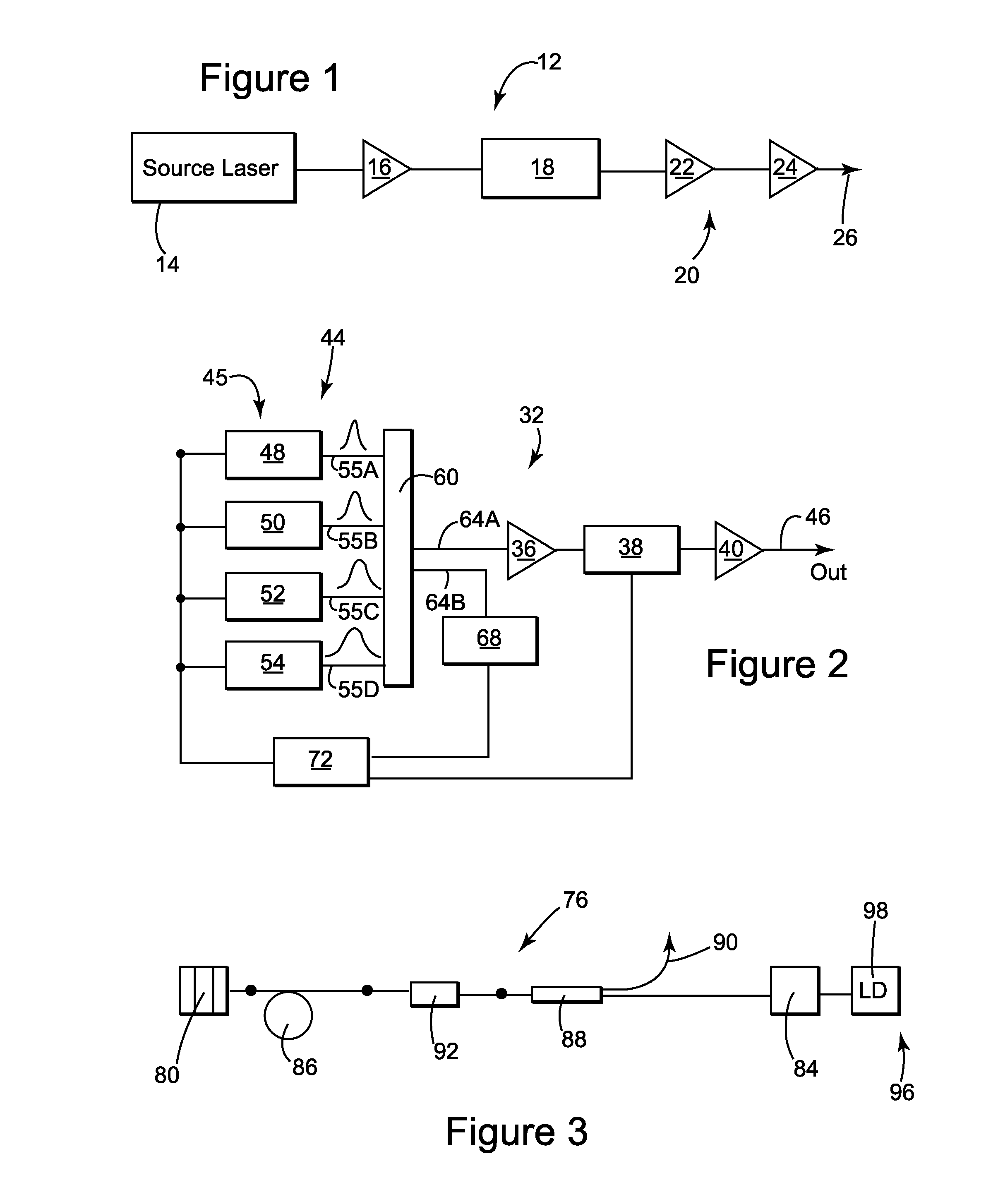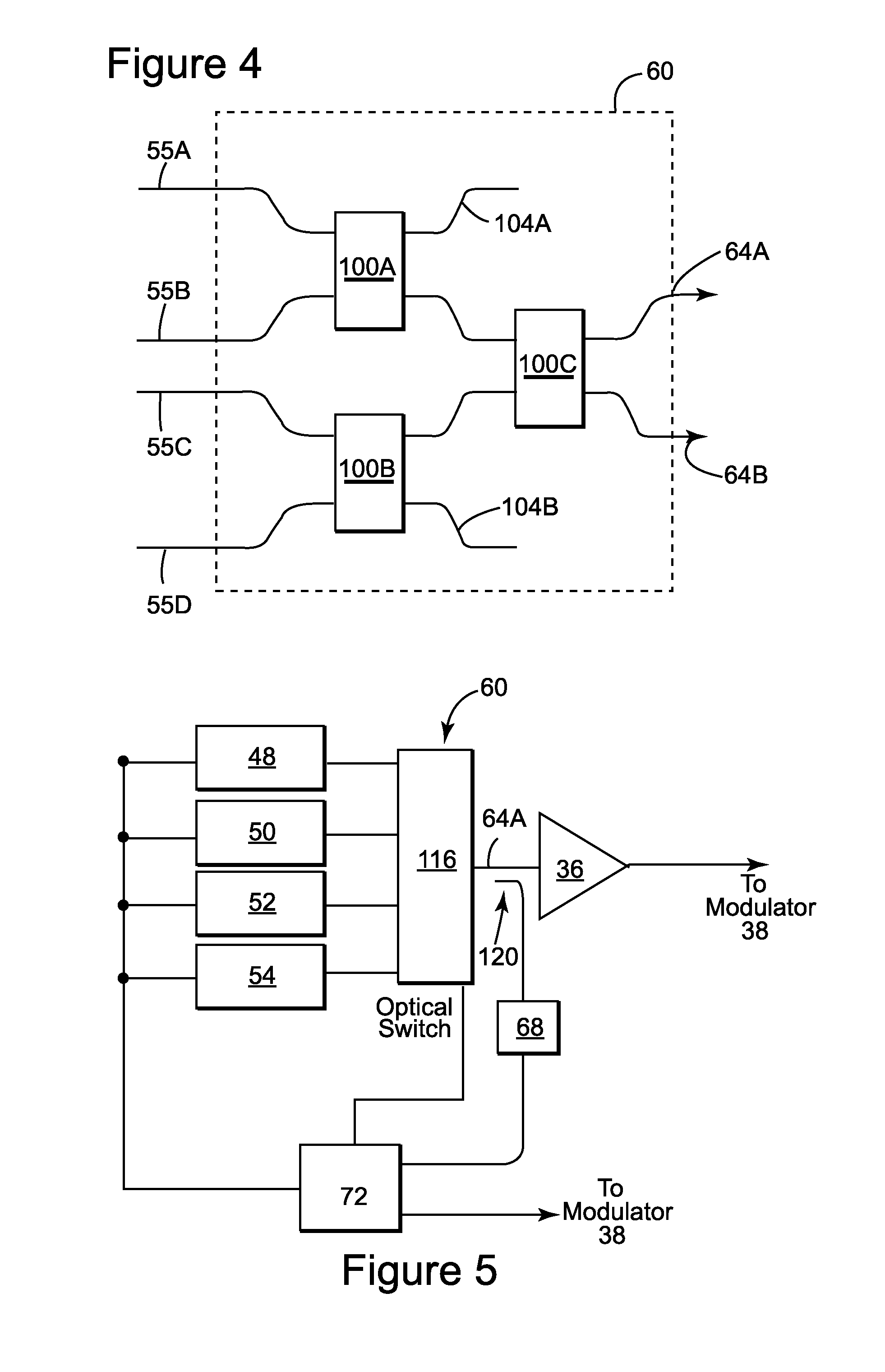Tunable pulse width laser
a pulse width and laser technology, applied in the direction of laser details, active medium shape and construction, electrical equipment, etc., can solve the problems of insufficient analytical or numerical solutions involving analytical or numerical solutions, inability to comprehensively analyze the theoretical approach and allow determination or optimization of the proper processing parameters, and many of the lasers noted above can be quite expensive and/or larg
- Summary
- Abstract
- Description
- Claims
- Application Information
AI Technical Summary
Benefits of technology
Problems solved by technology
Method used
Image
Examples
Embodiment Construction
[0069]FIG. 1 schematically illustrates one embodiment of a tunable temporal pulse width laser 12 according to the present disclosure. The tunable temporal pulse width laser 12 can include a tunable source laser 14, a preamplifier 16, a modulator 18, which can be configured as a pulse picker, and cascade of amplifiers 20, which cascade 20 can include the amplifiers 22 and 24. Typically the amplifier 24 is the most downstream amplifier of the tunable temporal pulse width laser 12 and is configured as a power amplifier. The tunable temporal pulse width laser 12 can comprise an output, indicated schematically on FIG. 1 by arrow 26, for outputting the pulses. In various practices of the disclosure, the tunable source laser 14 and / or the tunable temporal pulse width laser 12 can produce fast, ultrafast or ultrashort pulses, wherein the time duration of the pulses from the source laser (and hence of the output pulses 26 of the laser 12) can be changed, such as by being changed responsive t...
PUM
 Login to View More
Login to View More Abstract
Description
Claims
Application Information
 Login to View More
Login to View More - R&D
- Intellectual Property
- Life Sciences
- Materials
- Tech Scout
- Unparalleled Data Quality
- Higher Quality Content
- 60% Fewer Hallucinations
Browse by: Latest US Patents, China's latest patents, Technical Efficacy Thesaurus, Application Domain, Technology Topic, Popular Technical Reports.
© 2025 PatSnap. All rights reserved.Legal|Privacy policy|Modern Slavery Act Transparency Statement|Sitemap|About US| Contact US: help@patsnap.com



